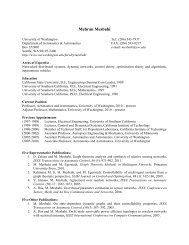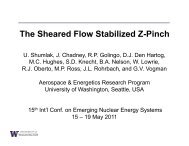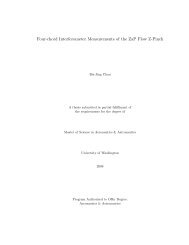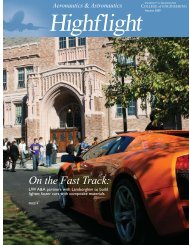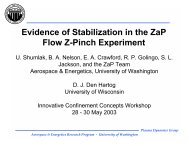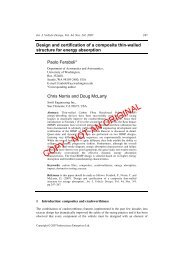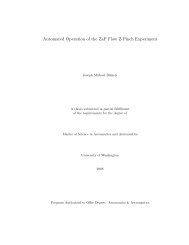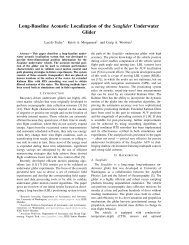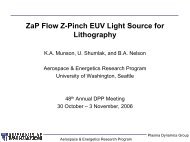Distributed Reactive Collision Avoidance - University of Washington
Distributed Reactive Collision Avoidance - University of Washington
Distributed Reactive Collision Avoidance - University of Washington
You also want an ePaper? Increase the reach of your titles
YUMPU automatically turns print PDFs into web optimized ePapers that Google loves.
2<br />
Figure 1.1: A snapshot <strong>of</strong> the US airspace showing the magnitude <strong>of</strong> the air traffic control<br />
task (photo courtesy <strong>of</strong> NASA).<br />
automated algorithms to decrease the workload <strong>of</strong> human operators.<br />
<strong>Collision</strong> avoidance is a difficult and interesting problem in the study <strong>of</strong> control theory<br />
because the goal is fundamentally different from that <strong>of</strong> a classical control system. The vast<br />
majority <strong>of</strong> classical control problems (and their current nonlinear counterparts) demand<br />
the system attain a particular point in the state space (be it stationary or moving). Most<br />
<strong>of</strong> the methods for this type <strong>of</strong> task use asymptotic analysis, whereby the system can be<br />
said to approach the goal regardless <strong>of</strong> the starting position or the route taken. <strong>Collision</strong><br />
avoidance is completely different in that there is no inherent end goal. The goal instead is<br />
to not enter particular regions <strong>of</strong> the state space at any time. <strong>Collision</strong> avoidance therefore<br />
has the effect <strong>of</strong> making the allowable set in the state space nonconvex, and in the case <strong>of</strong><br />
avoiding moving vehicles, the set is also time varying. Adding these restrictions to the state<br />
space makes otherwise simple problems extremely difficult. One <strong>of</strong> the primary reasons is<br />
that transient response is difficult to completely characterize using classical control, yet it<br />
is exactly these transients that cause most collisions. Now, instead <strong>of</strong> only considering the



